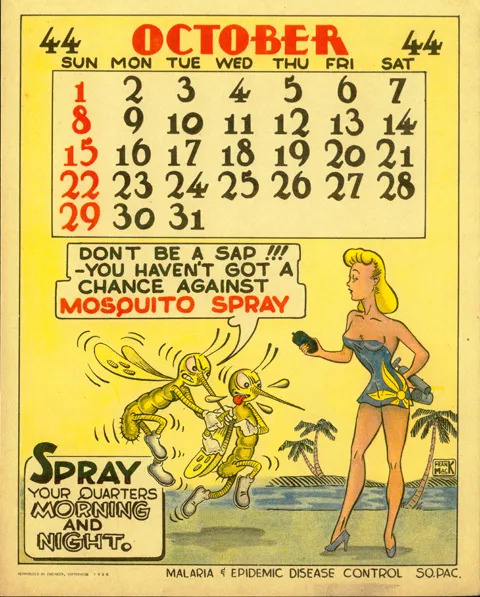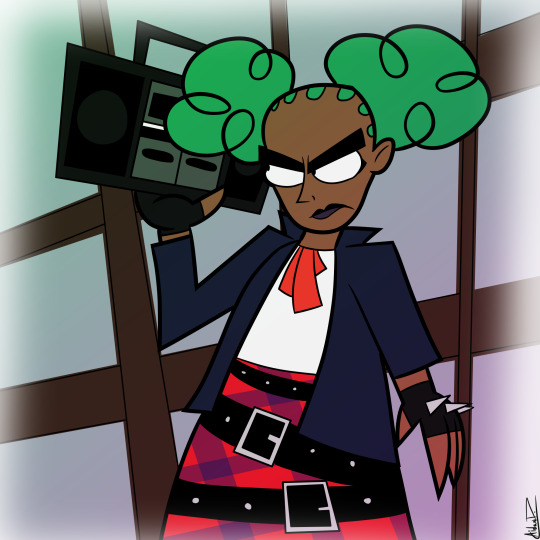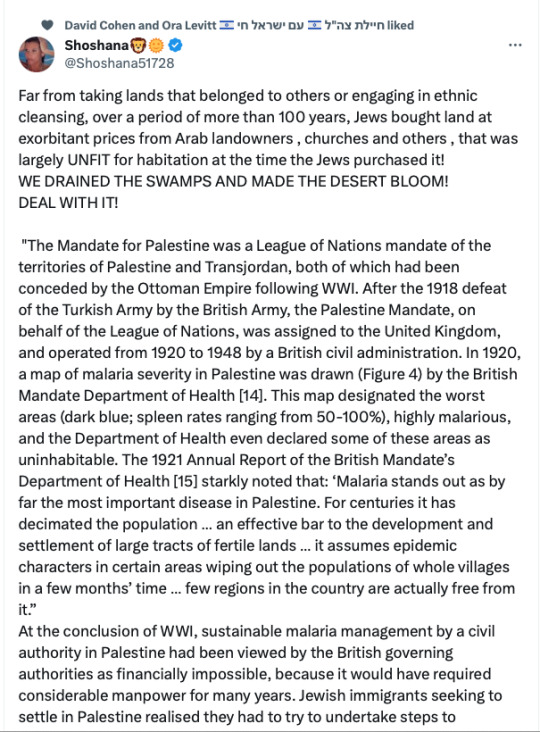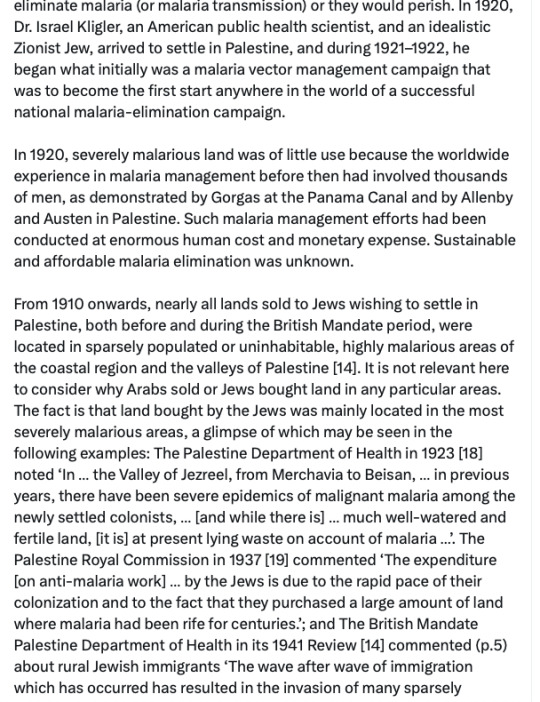#malaria
Text

Susanne Kuhnke in 'Malaria!' (1982)
1K notes
·
View notes
Link
“A young scientist who worked in the jungles of Thailand has been awarded a national prize for his invention of a $2 paper microscope that can be taken on field expeditions.
If a scientist wants to study something at the microscopic level, they need a microscope, which if they are deep in the Amazon Rainforest presents a serious problem.
Stanford University bioengineer Manu Prakash saw in his team’s $50,000 microscope a serious contradiction. As well as being bulky and ridiculously challenging to transport to remote locations, it needed training from skilled technicians to know how to use it. It also had to stay well out of the weather and other environmental impacts.
So he invented a portable one. Costing $1.75, the Foldscope has a 140x zoom, which is a small enough field to see a malaria parasite inside a cell...
“I want to bring science into everyone’s hands, make it more personal,” Prakash told CNN. “We have decoupled everyday life from the process of science.”
The ultimate in schoolhouse science, Prakash’s invention has sold 1.6 million units, mostly to schools in America, but serious scientists are also using it—like Dr. Kirti Nitnaware in India who works on the isolation and characterization of bioactive metabolites in cyanobacteria.
She used the Foldscope last year to isolate a new species of cyanobacteria. For this and other reasons, Prakash received the 2022 Golden Goose Award from the American Association for the Advancement of Science (AAAS), parent company of the scientific journal, Science.
“The Golden Goose Award reminds us that potential discoveries could be hidden in every corner and illustrates the benefits of investing in basic research to propel innovation,” said Sudip S. Parikh, chief executive officer at AAAS.” -via Good News Network, 9/20/22
#science#citizen science#thailand#stanford#microscope#science and technology#golden goose award#microbiology#malaria#good news#hope
5K notes
·
View notes
Text

It's malaria season.
441 notes
·
View notes
Photo

Malaria from The Grim Adventures of Billy and Mandy.
Drawn with markers and colored pencils.
#malaria#grim adventures#the grim adventures of billy and mandy#cartoon network#goth#pinup#retro#cartoon#markers#traditional art#art#fanart#colored pencils#tgaobam
828 notes
·
View notes
Text
I really enjoy these pages from an anti-malaria calendar issued to soldiers in World War II. It's a reminder that the soldiers were mostly just kids, and that the way to get them to pay attention was to make silly cartoons with pretty ladies in them.


{Buy me a coffee} {WHF} {Medium} {Looking Through the Past}
More propaganda at the link below:
99 notes
·
View notes
Text
Malaria, Sickle-Cell, and Dragons in the Temeraire Universe
so I've been thinking about sickle cell all day because of the very cool real-life FDA crispr treatment approval news, and also I'm just about done rereading empire of ivory so thusly it is time to write the sickle cell/malaria/dragons/benefits of human-dragon mutualism breakdown I mentioned ages ago.
Standard disclaimer that I am not in fact anywhere near an expert on this, this is mostly recall from ANTH 102/215 classes I took five years ago, the info is very simplified and possibly somewhat out of date. I'm doing some quick checks and I write this but only enough to make this an appropriate fantasy novel fandom post, not enough to make it actually reliably informative. I do have a couple citations, but mostly for the parts I'm lifting straight out of a class assignment I wrote, and they're a short documentary hosted on YouTube and the textbook for the class. also none of my links are live because I want this fandom post to actually show up in the fandom tag lol.
second disclaimer is I'm starting at the basic obvious stuff because I genuinely have no idea how much most people know about this and better safe than confusing.
Intro and Background
So the first thing to know about any of this is that human genetics for the most part to not operate on mendelian inheritance. So the punnet squares in high school biology that did human hair or eye color as basic dominant/recessive one-gene traits were totally lying to you. Like they're a teaching tool for a very simple model that works well enough but they're not accurate. Most human phenotypes are way way more complicated genetically than that.
That said, there are exceptions. Mendelian traits (Characteristics that are influenced by alles at only one genetic locus) do exist in humans, a number of them being related to genetic diseases. The list in the ANTH 102 notes I just dug up was: Wet (dominant) or dry Earwax; Albinism; Brachydactyly (dominant); Blood type (ABO, not the positive/negative part); Hereditary breast-ovarian cancer syndrome (BRCA-1, BRCA-2, unknown genes); Huntington’s disease; Lactase persistence (dominant); and Sickle-cell disease (recessive).
So the sickle cell punnet square looks like this for two parents who both have one copy of the sickle cell gene:

Sickle cell is a very painful and life threatening disease, (That's why the FDA approving a crispr treatment for it allowing patients to be their own bone marrow donors is very exciting.) and from an evolutionary perspective, one that very often prevents people from reproducing. It's also not strictly dominant/recessive, in that people heterozygous for sickle cell can have some symptoms like the possibility a sickle-cell crisis triggered in low-oxygen situations (high altitudes, intense exercise, etc).
So one might think that Sickle cell would be a vanishingly rare disease, since having it can be deadly and even having the trait can in some cases cause problems. Only it's not rare by genetically inherited disease standards, not at all.
And to make a long story very short, the reason is malaria.
Malaria
People who are heterozygous (possessing one sickle cell gene and one normal gene) for sickle cell anemia are resistant to malaria. In areas of the world without a high incidence of malaria historically, there is a strong selection against the sickle cell gene, (Biointeractive Malaria and Sickle Cell Anemia, 9:33) but in areas with malaria, both having sickle cell disease (homozygous HbSS) and not having the trait at all (homozygous HbAA) are selected against. People with sickle cell were historically less likely to reproduce, and people who were not resistant to malaria were more likely to die of malaria and also not reproduce. Because being heterozygous with sickle cell is selected for, the gene persists in the population.
The implications of that are best summed up from this map that I just stole from Britannica.com:

I dunno if the percentages on that second one are accurate tbh, other infographic maps I'm looking at give different ranges. but sill, you get the gist about how common it is in equatorial Africa. In the modern United States Black children are much much more likely to be born with sickle cell than white children—the genes don't just go away when the threat of malaria is removed. (And yeah, that's a historical consequence of the slave trade.)
There's some other stuff wrapped up in here too about bio-cultural evolution: There's indications that malaria was not a “significant problem until humans abandoned food foraging for farming” (Haviland, W. A., Prins, H. E., Walrath, D., & McBride, B.). Humans cleared away the forest, which had kept the soil absorbent. Without the vegetation, more water built up on the surface, forming stagnant puddles which were a perfect environment for malaria-causing mosquitoes to thrive, thus creating the conditions for sickle cell anemia to be advantageous. Farming creates caloric surplus which is great for humans, but it also changes the environment in ways that can be detrimental. Malaria is one way, creating the conditions for other epidemic diseases to thrive is another, etc. etc.
But if you've read this far you're probably going "Chi, you promised this would be a fandom post but so far this has been a serious and kind of sad post about disease. when are you going to get to the dragons?"
The Dragons
So the first time malaria comes up in the Temeraire books is in Throne of Jade, when a bunch of the sailors on the Allegiance come down with "malarial Fevers."
Jane, I must ask you to forgive the long gap in this Letter, and the few hasty Words that are all by which I can amend the same now. I have not had Leisure to take up my pen these three weeks—since we passed out of Banka Strait we have been much afflicted by malarial Fevers. I have escaped sickness myself, and most of my men, for which Keynes opines we must be grateful to Temeraire, believing that the heat of his body in some wise dispels the Miasmas which cause the ague, and our close association thus affords some protection.
But we have been spared only to increase of Labor: Captain Riley has been confined to his bed since almost the very first, and Lord Purbeck falling ill, I have stood watch in turn with the ship’s third and fourth lieutenants, Franks and Beckett. Both are willing young men, and Franks does his best, but is by no means yet prepared for the Duty of overseeing so vast a Ship as the Allegiance, nor to maintain discipline among her Crew—stammers, I am sorry to say, which explains his seeming Rudeness at table, which I had earlier remarked upon.
I do not know enough about what people thought about malaria in the 19th century to be 100% sure that this is actually malaria, but I think Novik wouldn't want to confuse her readers by calling something malarial that isn't you know..malaria. So I'm going to assume thats what it is. Google is not giving me figures on malaria survival rates before modern medicines for it which is driving me kind of nuts and means I can't say how lucky Riley and Purbeck were to survive with apparently no complications, but that's not the point here anyway. The point is the comment about the aviators not getting sick.
And not only (mostly) not getting sick, but not getting sick even though they aren't actually always near Temeraire. Laurence for example has been working watch shifts near constantly because he's the only one left on the ship who knows what he's doing. That means probably less read & cuddle time than is normal for him and Temeraire, and yet—no malaria.
We modern readers (and Novik) know that malaria is not caused by "miasmas" but by parasites carried by mosquitos. And lo and behold when we get to Empire of Ivory we get:
Mosquitoes sang happily as dusk drew on, though they did not come very close to Temeraire; the flies were less judicious. The shapes of the trees were growing vague when Temeraire woke with a start and said, “Laurence, there is someone coming, there,” and the grass rustled on the opposite bank.
So yeah, the dragons are keeping the mosquitos away. I know fuck all about why—it's probably not heat since you know, mosquitos like warm blooded organisms, but maybe it's an oil or a chemical or some artifact of the way some of them can breathe fire that's present in all dragons or something, they're described as smelling weird a few times, so who knows. If it's a substance like an oil in their skin that could explain why the aviators don't get sick even when they're not nearby, since they could have some on them from contact, but that's just speculation. The point is not the mechanism, just that it's happening.
The Point
This whole post grew out of a throwaway comment I made about the benefits of mutualistic symbiosis with dragons from the human perspective in that one post about how the series has some interesting stuff obviously going on psychologically/biologically. The point of going in-depth on malaria and sickle cell is to show how this is really impressively solid worldbuilding in relation to the Tswana.
See, Empire of Ivory describes locations that seem like they're in modern day Botswana, Zimbabwe, and Zambia, regions which will have had long-term problems with malaria-causing mosquitos. That's not the densest area for sickle cell, but still definitely in the region where malaria would have exerted selective pressure.
Selective pressure which, in a universe where just being around a dragon is going to drastically reduce malaria rates, is going to leave dragon-friendly populations a lot healthier than dragon-unfriendly ones. A community that has a dragon stay every night and work alongside humans during the day is going to have a lot less malaria even without the sickle cell resistance than a community which has no dragon. And considering that malaria is bad enough that sickle cell genes persist despite it also having a high chance to cause a deadly disease, whereas a dragon that's a fully prosocial member of the community is not going to cause more death and instead will probably help with defense and create more caloric surplus (at the cost of consuming most of that surplus) a dragon is just obviously the better option. From there, it's extremely easy to see how the Tswana in the series could develop such a dragon-centric culture and have it be so wildly successful. The dragons provide fertilizer, the dragons allow for fully domesticated elephants, and the dragons render malaria—one of the deadliest diseases in history—nearly a nonissue. Of course they're family.
Citations:
Biointeractive. (2014, August 26). Malaria and Sickle Cell Anemia - HHMI BioInteractive Video. Retrieved October 3, 2018, from https://www.youtube.com/watch?v=Zsbhvl2nVNE
Haviland, W. A., Prins, H. E., Walrath, D., & McBride, B. (2017). Anthropology: The Human Challenge (15th ed.). Boston: Cengage Learning.
#Temeraire#it’s more bio-cultural evolution#wikipedia claims that malaria may have killed 50-60 billion people through history but I do not trust that citation AT ALL#regardless its still one of the deadliest killers ever#the kitten rambles#malaria#sickle cell anemia#Artemis if you read this I am sorry for the butchering I made of some anthropology concepts
95 notes
·
View notes
Text
Five cases of malaria have been confirmed in Florida and Texas, the first time the potentially fatal mosquito-borne disease has been locally acquired in the United States in 20 years, the U.S. Centers for Disease Control and Prevention said Monday.
The four Florida cases, along with one in Texas, have been diagnosed over a period of two months, the agency said.
The state of Florida said that its first case was diagnosed on May 26 in Sarasota County, while officials in Texas said on June 23 that a Texas resident who worked outdoors in Cameron County had been diagnosed with the disease.
The CDC said in an alert released Monday that malaria is considered a medical emergency, and that anyone with symptoms should be "urgently evaluated."
However, the CDC said that risk of malaria remains low in the United States, and that most cases are acquired when people travel outside of the country. Fully 95 per cent of malaria infections are acquired in Africa, the health agency said.
Continue Reading
97 notes
·
View notes
Text




It's been a bit. So, I had this event a few weeks ago where I would draw gothic characters (Or Mostly Gothic,) simply called "Gothic Week." So, yeah.
#lacey shadows#the modifyers#lord dominator#wander over yonder#kat elliot#wendell and wild#malaria#billy and mandy#cartoon network#nickelodeon#disney xd#defrehn#2000s aesthetic
75 notes
·
View notes
Text

Pins I've made for myself back in high school
459 notes
·
View notes
Text




Source
#drained the swamps#made the desert bloom#british mandate over palestine#ottoman empire#malaria#israel jacob kligler
52 notes
·
View notes
Photo

The incredible decline in the spread of malaria
177 notes
·
View notes
Text
The unexpected discovery of China’s earliest writing occurred when Wang Torong came down with malaria. The prescription of ‘dragon bones’ to help the healing process set off an investigation which ended up leading to the oracle bones of Yinxu, the earliest known source of Chinese writing.
Ongoing use of dragon bones in Chinese medicine raises concerns among experts, lamenting the continual depletion of potential paleontological and archaeological treasures.
#oracle bones#bones#inscriptions#China#Chinese medicine#malaria#writing#ancient#history#ancient origins
27 notes
·
View notes
Text
instagram
28 notes
·
View notes
Text
A newly-discovered gene in the malaria parasite could be a good target for future drugs aimed at preventing disease transmission.
The gene, discovered by Imperial College London researchers, is crucial for the development of the infectious stage of the malaria parasite. It also has unique features that could make it a good target for future drugs.
Half of the world's population is at risk of contracting malaria, and in 2021 alone there were over 247 million cases and 619,000 deaths from malaria, mostly children under five years old in sub-Saharan Africa.
Continue Reading.
50 notes
·
View notes
